How to Run the Windows Hardware Troubleshooter
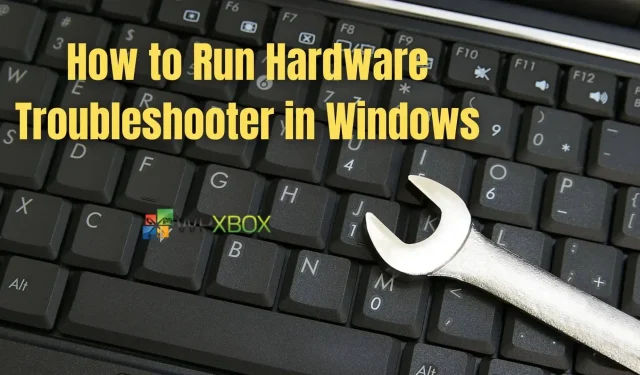
Windows has a built-in hardware troubleshooter that can help you fix problems with your PC’s hardware and devices. Find out here how to run the Windows 11/10 Hardware Troubleshooter.
What is the Hardware Troubleshooter?
The process of checking, diagnosing, and identifying operational or technical problems with a hardware device or piece of equipment is called hardware troubleshooting. It aims to eliminate structural, logical or physical flaws and problems in computing equipment. Technical support or hardware technicians perform hardware troubleshooting.
The process starts with identifying the problem, followed by looking for potential causes of the problem, and eventually implementing a solution.
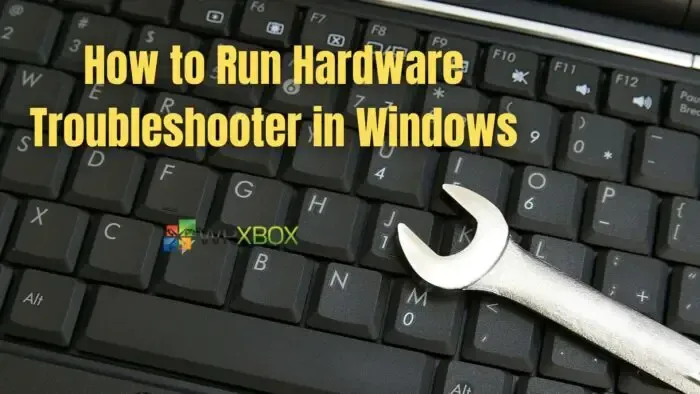
How to Run the Windows Hardware Troubleshooter
You can run the Windows Hardware Troubleshooter in two ways.
1. Run the troubleshooter through the Windows terminal.
2. Run the Hardware Troubleshooter in Windows Settings.
Some of them may require an administrator account.
1] Run the troubleshooter through the Windows Terminal.
To troubleshoot hardware issues, you can use the general Windows Hardware and Device Troubleshooter by running it from the command line in the Windows Terminal.
Thus, running this Hardware and Devices Troubleshooter helps you identify and fix common issues with your keyboard, printer, Bluetooth, USB, audio playback, and other devices. The following is a guide on how to use the Hardware and Devices troubleshooter through the Windows Terminal.
- On a Windows PC, right-click the Windows logo in the lower left corner of the screen and select Windows Terminal (Admin).
- Click Yes when prompted by User Account Control.
- Copy and paste the following command line and press Enter.
msdt.exe -id DeviceDiagnostic
- Click the “Next”button on the “Hardware and Devices”pop-up window and your computer will start detecting any hardware issues.
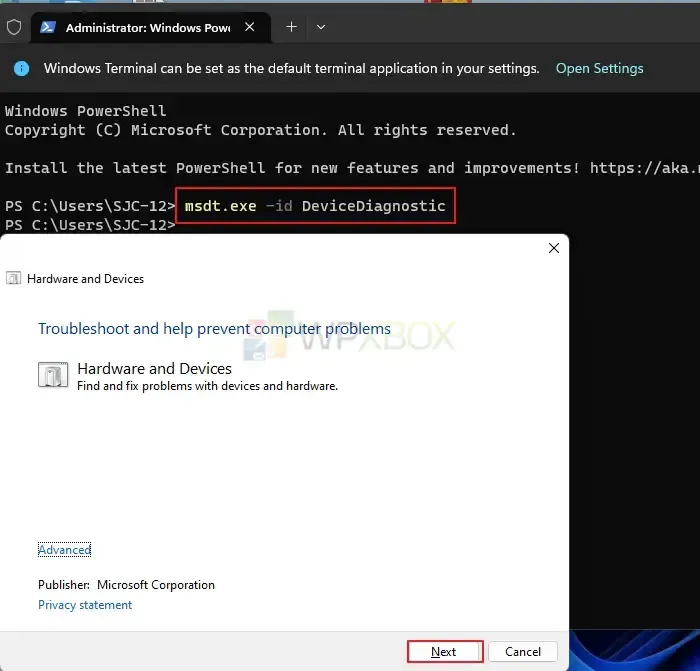
Follow the on-screen instructions to fix and resolve hardware issues.
2] Run the Hardware Troubleshooter via Windows Settings.
The Hardware and Devices troubleshooter can be quickly launched from the Windows Settings interface. Here’s how to use it to identify problems with your battery, SD card, audio, and more:
- Press Windows Key + I to open Settings. Click on the “System”option on the left panel. Then scroll down, find and click the Troubleshoot option on the right.
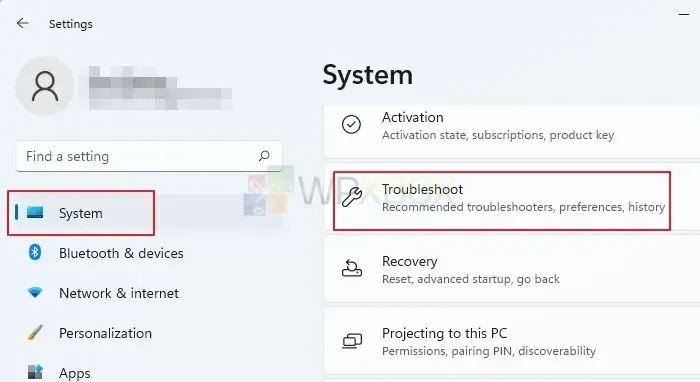
- Click “Other troubleshooters”on the right.
- Here you can see all the hardware and devices of your PC. Click the Run button next to the hardware device that is causing the problem on your PC.
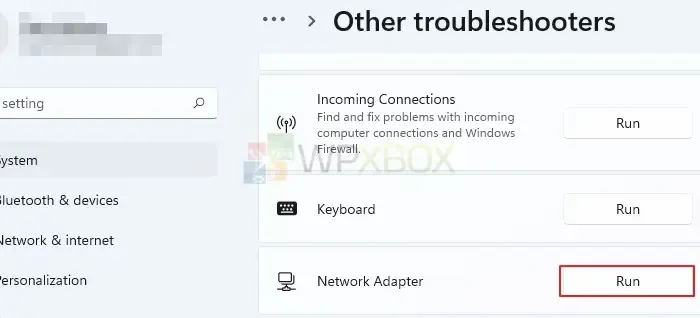
This program will then determine exactly what happened to the selected hardware. If it finds a problem that can be fixed, it will try to fix it once. If you need to intervene to fix the problem, a pop-up window will appear with instructions on what to do.
Follow the instructions on the screen and restart your computer after the process is complete.
Conclusion
So, these are two ways to run the hardware troubleshooter on Windows PC. Windows Settings and Windows Terminal are built-in features of Windows, so you don’t need to install any third-party apps to run the troubleshooting process.
So, I hope the methods were easy to use and helped you resolve any issues with your hardware.
Do you have more questions about hardware troubleshooting in Windows? Check out the frequently asked questions and answers below.
How can I check if my equipment is working?
Windows Security scans your device for security flaws and provides a health report that can be found on the Device performance and health page. The Health Report alerts you to common problems in four main areas and suggests ways to fix them.
To view the device health report in Windows Security, type “Windows Security”in the search box on the taskbar, and then select it from the list of results. To access the health report, select Device performance and health.
The health report opens, showing the date the device was last health scanned. When you open the Device Performance and Health page, Windows Security attempts to perform a device health scan. Therefore, the represented time must be essentially the current time.
Note. Your administrator may not have allowed you to view device performance and health if your organization manages your device.
How do I run a hardware test on my laptop?
You can run a hardware test on your laptop to check if your PC hardware is working. For example, this is how you run a hardware test on an HP laptop.
HP offers diagnostic software to check your PC’s hardware components and troubleshoot hardware problems. To quickly find hardware problems, start with a quick test. If the test returns without errors, but your PC shows signs of a hardware problem, run an extended test.
If the test returns without errors, but your PC shows signs of a hardware problem, run an extended test.
Do the following if the component fails the test:
Click Troubleshoot. Try to fix the problem by following the on-screen instructions and clicking Yes. Select “Yes”to contact HP Customer Support if the issue persists. When contacting HP Customer Support, write down or copy the Fault ID (24-digit code) and Product ID.
Details can be found in the challenge logs in the main menu. To access the HP Customer Support website when your computer is online, click NEXT. If your computer is offline, use your mobile device to scan the provided QR code to access HP Customer Support.
Leave a Reply